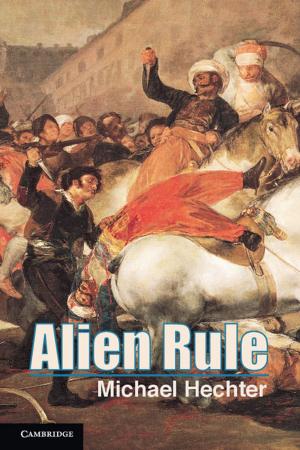The Struggle for the Streets of Berlin
Politics, Consumption, and Urban Space, 1914–1945
Nonfiction, History, European General, Social & Cultural Studies, Political Science| Author: | Molly Loberg | ISBN: | 9781108284868 |
| Publisher: | Cambridge University Press | Publication: | March 29, 2018 |
| Imprint: | Cambridge University Press | Language: | English |
| Author: | Molly Loberg |
| ISBN: | 9781108284868 |
| Publisher: | Cambridge University Press |
| Publication: | March 29, 2018 |
| Imprint: | Cambridge University Press |
| Language: | English |
Who owns the street? Interwar Berliners faced this question with great hope yet devastating consequences. In Germany, the First World War and 1918 Revolution transformed the city streets into the most important media for politics and commerce. There, partisans and entrepreneurs fought for the attention of crowds with posters, illuminated advertisements, parades, traffic jams, and violence. The Nazi Party relied on how people already experienced the city to stage aggressive political theater, including the April Boycott and Kristallnacht. Observers in Germany and abroad looked to Berlin's streets to predict the future. They saw dazzling window displays that radiated optimism. They also witnessed crime waves, antisemitic rioting, and failed policing that pointed toward societal collapse. Recognizing the power of urban space, officials pursued increasingly radical policies to 'revitalize' the city, culminating in Albert Speer's plan to eradicate the heart of Berlin and build Germania.
Who owns the street? Interwar Berliners faced this question with great hope yet devastating consequences. In Germany, the First World War and 1918 Revolution transformed the city streets into the most important media for politics and commerce. There, partisans and entrepreneurs fought for the attention of crowds with posters, illuminated advertisements, parades, traffic jams, and violence. The Nazi Party relied on how people already experienced the city to stage aggressive political theater, including the April Boycott and Kristallnacht. Observers in Germany and abroad looked to Berlin's streets to predict the future. They saw dazzling window displays that radiated optimism. They also witnessed crime waves, antisemitic rioting, and failed policing that pointed toward societal collapse. Recognizing the power of urban space, officials pursued increasingly radical policies to 'revitalize' the city, culminating in Albert Speer's plan to eradicate the heart of Berlin and build Germania.















